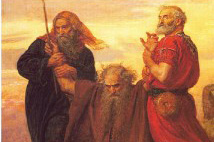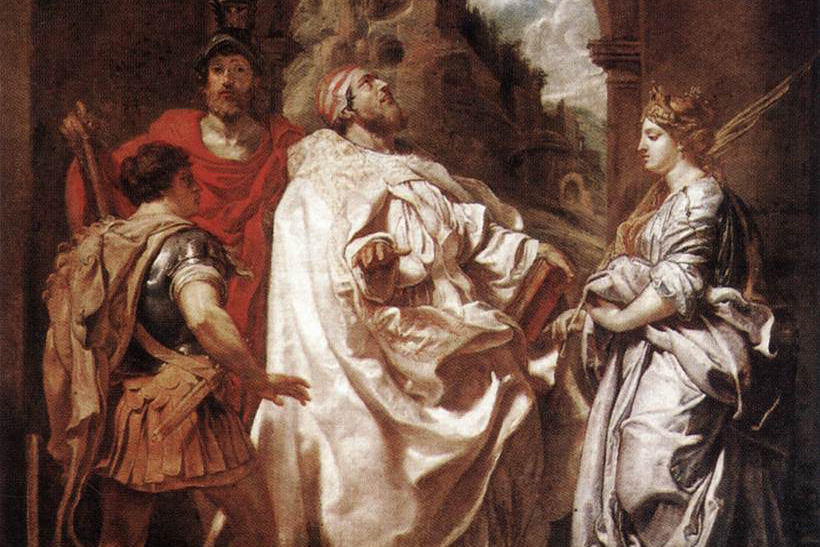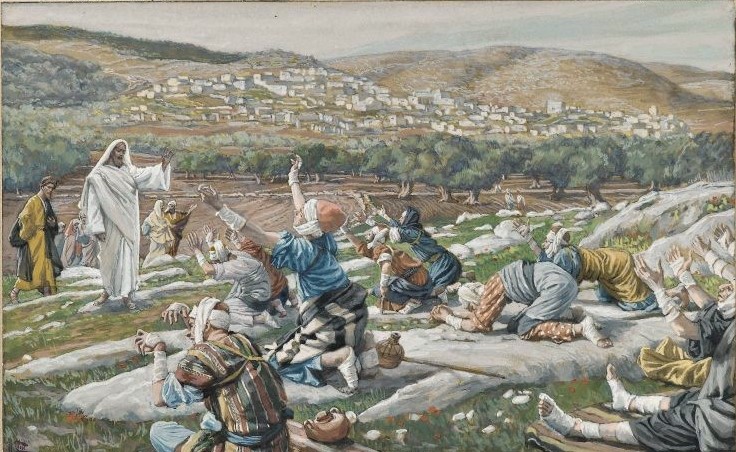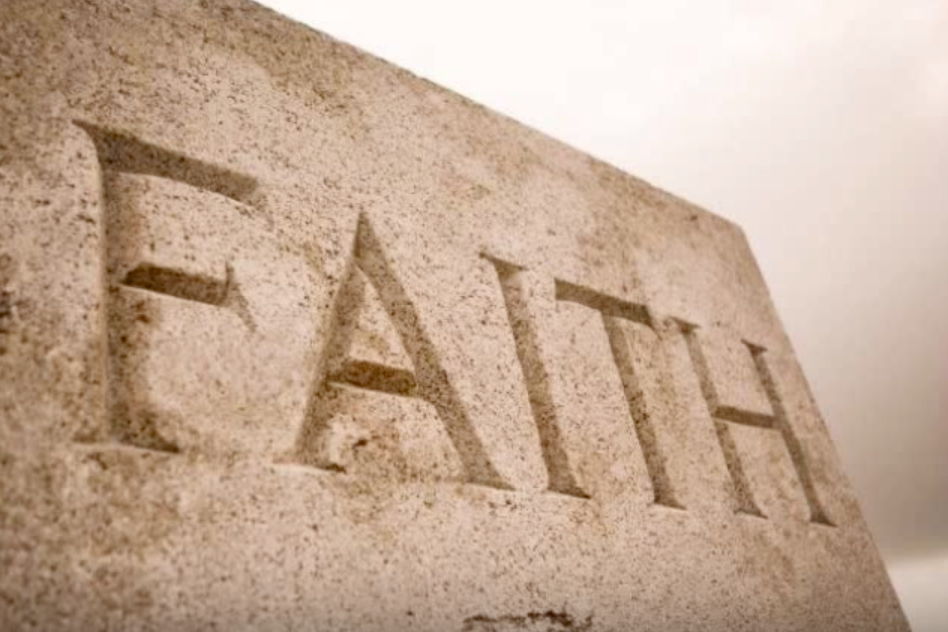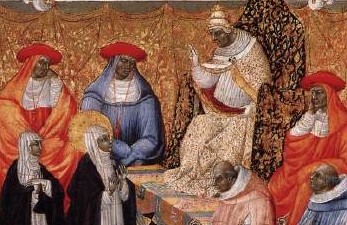Sinful, misleading, and even heretical clergy are nothing new, yet this remains a profound sadness. It is a rare week when someone does not contact me from somewhere in the country to say that his or her parish priest is preaching or teaching something that is a half-truth, erroneous, heretical, and/or scandalous. Add to this the silence of many other priests and bishops and we have a flock that is often disheartened and confused. Woe to clergy who mislead, pervert the truth, or spread error and confusion.
Last week in the Office of Readings we read from the Book of the Prophet Malachi, where there is set forth a kind of riv (a Hebrew word for a lawsuit, indictment, or controversy) by God. The Lord presents a legal case of sorts, which convicts ancient priests of numerous deficiencies and calls for their repentance. The case shows a body of evidence that is just as true today as it was then. God has plenty to say, and we have much to hear, much to repent.
As we consider the sins of the priests described below, please understand that neither the biblical text nor my commentary should be construed to imply that all or even most priests are like this. Sadly, though, sins and shortcomings are far too common among the clergy. As priests must strive to be better and more holy, so also must the laity remember to pray for us.
With that in mind, let’s consider the sins of priests in three basic areas.
Shoddy Sacraments
A son honors his father, and a servant his master. If then I am a father, where is my honor? And if I am a master, where is my fear? So says the Lord of hosts to you, O priests, who despise my name. You say, “How have we despised thy name?” By offering polluted food upon my altar. And you say, “How have we polluted it?” By thinking that the Lord’s table may be despised. When you offer blind animals in sacrifice, is that no evil? And when you offer those that are lame or sick, is that no evil? Present that to your governor; will he be pleased with you or show you favor? says the Lord of hosts. And now entreat the favor of God, that he may be gracious to us. With such a gift from your hand, will he show favor to any of you? says the Lord of hosts. Oh, that there were one among you who would shut the doors, that you might not kindle fire upon my altar in vain! I have no pleasure in you, says the Lord of hosts, and I will not accept an offering from your hand. For from the rising of the sun to its setting my name is great among the nations, and in every place incense is offered to my name, and a pure offering; for my name is great among the nations, says the Lord of hosts. But you profane it when you say that the Lord’s table is polluted, and the food for it may be despised (Malachi 1:6-12).
Those are strong words indeed. While the injunction regarding damaged and polluted animals has changed, the intrinsic problem remains: careless celebration of the Liturgy and the sacraments.
One of the most common complaints from the faithful concerns priests who violate liturgical norms and/or allow others to do so. Few things offend charity and unity as much as the open, sometimes egregious violation of liturgical norms. Although some violations are minor, why not just celebrate the liturgy as it is set forth in the books? In some places in the liturgy there are legitimate options, and not every complaint is accurate or fair, but God’s people have endured several decades of exotic and often egocentric liturgical experiments, which are not approved and which take the focus off God and the proper worship due Him.
A priest cannot be expected to fix every problem in the liturgy the day he walks through the door, but proper liturgical formation of the faithful with due regard to charity and patience is one of his essential tasks as pastor of souls—and he should begin with himself. The liturgy, both its mechanics and its spiritual significance, should be his study and his great love.
Another problem that can emerge is inattentiveness to the dignity and beauty of the Mass and the sacraments. Proper attire and decorum are important ways that we communicate our love for God and one another. Priests should be properly vested, prepare their sermons prayerfully, and avoid mannerisms that are inappropriate or overly casual. Opulence and fussiness are not necessary, but priests should ensure that liturgical appointments are clean, in good repair, and of proper dignity.
Decades ago, poor immigrant communities sponsored the construction of some of the most beautiful churches. They also supplied some of the finest art and liturgical implements. It is important that we keep what they have bequeathed to us in good repair. Further, priests can and should teach the faithful to follow the example of our recent ancestors by seeking to build and maintain worthy churches, erected for the glory of God rather than just the utility of man. In the recent past, many of the faithful have been shocked and hurt by the senseless “wreckovation” of sanctuaries and altars. Thanks be to God, many people today are growing in their appreciation of older churches and are seeking to preserve them.
If God was offended by the offering of a lame or sick animal, why should we think He is pleased with just any old thing in the Sacred Liturgy? God does not need our gold chalices or our magnificent churches, but He knows that the shoddy, perfunctory, “anything goes” celebration of the Sacred Liturgy says something about our hearts, our priorities, and what we value.
Priests must avoid all conscious violation of liturgical norms, make central the devoted study of liturgy, and inspire respect among the faithful for the Sacred Liturgy. St. Paul summarizes well his liturgical teaching of 1 Cor 11-14 by concluding with this: But all things should be done decently and in order (1 Cor 14:40).
Burdens not Blessings? Behold your Barrenness!
“What a weariness this is!” you say, and you sniff at me, says the Lord of hosts … And now, O priests, this command is for you. If you will not listen, if you will not lay it to heart to give glory to my name, says the Lord of hosts, then I will send the curse upon you and I will curse your blessings; indeed, I have already cursed them, because you do not lay it to heart. Behold, I will rebuke your offspring, and spread dung upon your faces, the dung of your offerings, and I will put you out of my presence. So shall you know that I have sent this command to you, that my covenant with Levi may hold, says the Lord of hosts. My covenant with him was a covenant of life and peace, and I gave them to him, that he might fear; and he feared me, he stood in awe of my name (Malachi 1:13, 2:1-5).
The priests of that ancient Jewish time had families, and God warned that if the fathers did not obey, their children would suffer many curses. While priests today do not have children of their own, thousands call us “Father.”
The sins and omissions of priests today surely have brought trouble upon the faithful. We have been through a period during which too many priests have been rebellious, unfaithful to Church teaching, slothful, unprepared to preach, un-prayerful, and irreverent. Some have even been guilty of grave sins and violations of their state in life. In addition, far too many priests and religious have left the sacred call they agreed to live for life.
All of this has resulted in many troubles for the faithful. Some are discouraged and angry; most are poorly catechized and ill-informed on critical moral issues. Many are confused by priests and bishops who have openly dissented from Church teaching, who do not listen to God or take to heart His teachings and stand in awe of His name.
In this way, the flock is often harmed by poor priestly leadership and example. Recent data show that about eighty percent of Catholics no longer attend Mass regularly. Many of those who do attend are barely in communion with the Church’s teachings and struggle to live the glorious vision set forth in the gospel.
Sadly, this text from Malachi echoes a similar one from Zechariah: Strike the shepherd, and the sheep will be scattered (Zech 13:7). This is why the sins of priests are so serious and why the faithful must pray for them fervently. Not only are priests subject to targeted attack by Satan, they are also especially susceptible to grandiosity, pride, and the sin of craving human respect.
Pray that priests do not become weary of exhortation or speak of their office as a burden. Pray, too, that they do not succumb to modern notions that the gospel is too burdensome for the faithful and therefore fail to preach it or to encourage the faithful to live it.
Sacerdotal Silence
True instruction was in [Levi’s] mouth, and no wrong was found on his lips. He walked with me in peace and uprightness, and he turned many from iniquity. For the lips of a priest should guard knowledge, and men should seek instruction from his mouth, for he is the messenger of the Lord of hosts. But you have turned aside from the way; you have caused many to stumble by your instruction; you have corrupted the covenant of Levi, says the Lord of hosts, and so I make you despised and abased before all the people, inasmuch as you have not kept my ways but have shown partiality in your instruction (Malachi 2:6-9).
Silent pulpits are all too commonplace in the Church today. Some priests prefer to play it safe, fearing to preach about the issues of the day out of human weakness. Others do not believe certain teachings themselves or think them impractical in modern times. Still others have turned aside from the truth, preaching and teaching outright dissent—and by preaching corruption they cause many to stumble.
It is tragic as well that so many priests are permitted to mislead the faithful without being corrected and disciplined for it by their religious superiors.
The text says that a priest should guard knowledge. That is, he should protect it from those who would distort it; he should refute error. He must also guard it from misunderstanding and see that it is presented in balance with other truths in Scripture and Tradition. St. Paul says this of a presbyter: He must hold firmly to the trustworthy message as it has been taught, so that he can encourage others by sound doctrine and refute those who oppose it (Titus 1:9).
The text of Malachi also warns against incomplete teaching, wherein a priest chooses which truths he will teach or emphasize and which he will not. St. Paul said to the elders at Miletus, Therefore I testify to you this day that I am innocent of the blood of all, for I did not shrink from declaring to you the whole counsel of God (Acts 20:26-27). Yes, the whole counsel, the complete truth, is to be taught by the priest.
Sadly, some of these rebukes concerning incomplete teaching must still be made today. Encourage your priests when they speak confidently and clearly. Thank them; give them support even if they challenge you. The job of a priest is not to be popular but to be a prophet. It’s tough work and it isn’t always welcomed. Even the prophets needed support from the seven thousand who had still not bent the knee to Baal or kissed him (cf 1 Kings 19:18). Pray for priests and encourage them to announce the whole counsel of God.
These are some of the sins of the priests that God sets forth. Let us not forget, however, that the world has many hard-working, dedicated, loyal, and holy priests. Yet, as these passages remind us, priests can lose their way. They can forget the glory of the liturgies they celebrate, refer to their office and the gospel as burdensome, and grow too silent out of fear or laziness.
Pray for priests!


